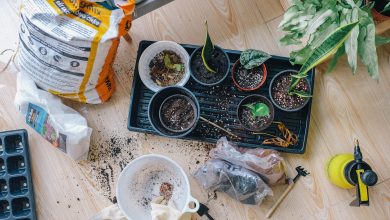Effective Ways to Build a Low-Maintenance Home

If you want to create a low-maintenance home, the materials and components you employ, as well as how well they are built and how they interact, will be the deciding elements. Because there is a financial trade-off to be made between the investment in construction quality and the money that may be saved throughout the life of the house, the decision to lessen the maintenance burden should be made early in the design phase.
If you’re building or renovating your own house, it’s definitely worth investing time and money to make it as durable as possible. There are a few simple ideas that can assist lower the cost of maintaining a structure, frequently recouping the additional expenditure many times over.
1. Vinyl Siding
Upgrade to low-maintenance vinyl or plastic siding if the thought of painting your home’s exterior every few years exhausts you. The newest vinyl siding alternatives are long-lasting and have color integrated throughout to avoid fading. You’ll receive all the elegance of conventional lap or shake siding without the weathering, so your home will look just as nice in ten years as it did when it was put.
2. Central Vacuum
When developing a home, it’s a no-brainer to include a central vacuum system. They’re really convenient and, to be honest, don’t cost a lot of money if you include this in your plans from the beginning.
With a central vacuum, you won’t have to lug a heavy vacuum cleaner up and down flights of stairs, deal with cables, or deal with any of the other common vacuuming issues. Simply connect your hose to the wall hole and begin cleaning.
3. Moisture Prevention
There are two major strategies to prevent this from happening. One option is to create a somewhat sophisticated system of mechanical extract ducts and fans to remove damp air from the structure before it enters, but this would require frequent maintenance, and you need to replace the kit.
The alternative is to design the structure to breathe naturally, which means using materials like lime plaster, mortar, and render that enable moisture to evaporate and move to the outside of the walls over time.
To aid this process, properties with hollow walls, especially those with a timber superstructure, must have ventilation to the outside running between the leaves.
4. Engineered Hardwood
Hardwood flooring, we can all agree, elevates the look of a property. It’s elegant, opulent, and simply attractive. Traditional hardwood flooring, on the other hand, might be difficult to keep clean and maintain. It scrapes, fades, and is susceptible to water damage. Other options, such as engineered hardwood, are thankfully available.
“The top layer of engineered hardwood is made of actual wood. “It can also be refinished if necessary without the price or difficulty of replacing a part of the floor,” adds flooring installation expert Jason Brubaker.
If you want the beauty of real hardwood without maintenance, choose an engineered choice. Most people will never realize the difference because the top layer is actual wood.
5. Slate Roof
If you want to stay in your house for a long time, talk to your builder about upgrading from typical architectural asphalt shingles to more lasting roofing materials such as slate.
Architectural asphalt shingles have a 30-year life expectancy and cost between $2 and $3 per square foot. Slate, on the other hand, may survive for almost a century. You pay a premium for durability – about $4 to $6 per square foot – but you won’t have to do anything with it for the rest of your home’s life. Clay tiles are another long-lasting alternative, but they will set you back more than $10 per square foot.
6. Windows
Cladded windows are high-quality and low-maintenance windows. Wood-made windows have a coating of vinyl or aluminum. You’ll love the lovely hardwood finish on your windows within, and you’ll never have to sand or paint the vinyl or metal cladding outside. And while you’ll still have to clean the panes now and again, if you choose casement windows or tilt-in sashes, you’ll be able to do it from the comfort of your own home.
7. Hardscaping
We don’t advocate going too wild with grass, flower beds, and other “softscaped” areas that take a lot of upkeep unless you’re planning to employ a professional landscaping crew to manage your yard on a weekly basis. Instead, increase the amount of hardscaping on your property. Cleaning and maintaining rocks, gravel, paths, and hard surfaces is considerably easier.
These are the ways to build a low-maintenance and durable house. Utilize these tips to have a beautiful home with the utmost durability. You can also take the help of a residential architect to make suitable choices that promote durability and low maintenance.
Stick around for more such tips.
Read More: 5 Methods for a Pest-Free Fall at Home




